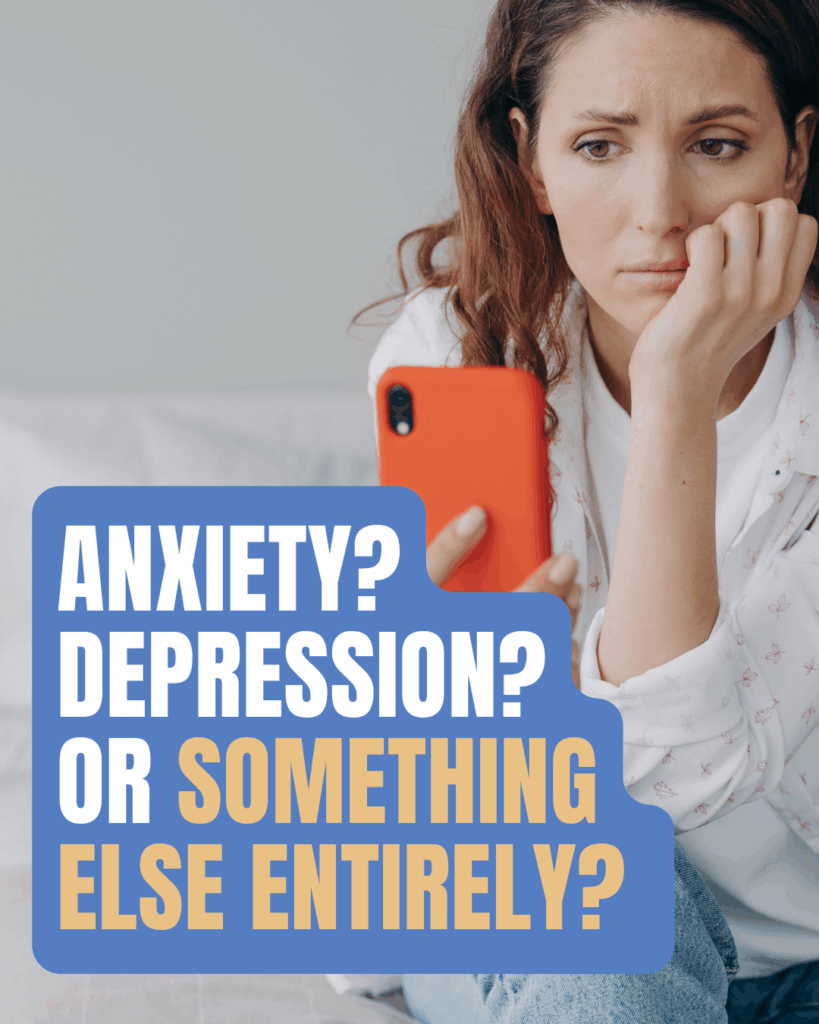Do you find yourself drifting through your day, mentally fuzzy, missing appointments, or constantly distracted, even when you should be focused? Maybe your mind feels like it’s wrapped in cotton wool, small tasks feel overwhelming, and despite doing all the “right” self-care, your to-do list only grows longer. It’s easy to chalk it up to stress, anxiety, or burnout. But sometimes, these symptoms trace back to a frequently overlooked condition: adult inattentive-type ADHD.
What Is Inattentive-Type ADHD?
Unlike the classic picture of restless, hyperactive children, adult inattentive ADHD often looks quieter and sneakier. It may show up as scattered attention, forgetfulness, procrastination, chronic disorganization, and difficulty sustaining effort. These challenges often masquerade as anxiety, depression, or simple overwhelm. But beneath the surface, the brain is working differently.
Common Signs You May Be Missing
- Persistent brain fog and memory glitches. Details slip away even after a good night’s sleep.
- Chronic distraction. Not just from external noise, but from a wandering, unfocused mind.
- Procrastination. Starting tasks feels paralyzing—not from fear, but because your brain can’t “switch on.”
- Forgetfulness. Missed appointments, misplaced items, or zoning out mid-conversation are all classic cues.
Why It’s Often Misdiagnosed
Adults with inattentive ADHD, especially women, are often diagnosed with anxiety, depression, or stress instead. That’s because they don’t display the stereotypical hyperactive behaviors. Instead, they struggle with quiet but persistent issues: emotional dysregulation, fatigue, and overwhelm. When the true root cause is missed, people may feel stuck or ashamed, especially if medications or therapies don’t fully resolve their symptoms.
What’s Happening Beneath the Surface
At its core, inattentive ADHD involves executive dysfunction, the brain’s ability to organize, prioritize, and act on tasks. Neurotransmitters like dopamine and norepinephrine are often dysregulated in areas of the prefrontal cortex that govern attention, motivation, and impulse control. This creates the frustrating experience of knowing what to do, but feeling unable to do it consistently.
A Functional Medicine Approach
Traditional treatments often focus on medications, which can be helpful. But we often ask: What’s driving these imbalances, and how can we support the whole system?
1. Functional Testing
- Nutrient testing to check for deficiencies in iron, zinc, magnesium, omega-3 fatty acids, and B vitamins, all critical for neurotransmitter balance.
- Blood sugar and insulin testing to assess glucose regulation. Dysregulated blood sugar can mimic or worsen ADHD symptoms.
- Comprehensive stool or microbiome testing if gut health issues are suspected, since gut inflammation can affect brain chemistry.
- Hormone panels are used when symptoms overlap with thyroid issues, adrenal dysfunction, or estrogen/progesterone imbalances.
2. Nutrition for Focus and Clarity
- Steady blood sugar = steady focus. A protein-rich breakfast and balanced meals throughout the day can reduce crashes that worsen distraction.
- Omega-3 fatty acids. Found in fatty fish, chia, and flax, these support brain cell membranes and neurotransmission.
- Iron, zinc, and magnesium. Common deficiencies linked with ADHD symptoms; leafy greens, nuts, seeds, and legumes can help.
- Elimination diets (when appropriate). Food sensitivities (like gluten or dairy) may exacerbate brain fog and inflammation in some people.
3. Lifestyle and Brain-Supportive Habits
- Prioritize sleep. Deep, restorative sleep helps reset the prefrontal cortex. Aim for a consistent bedtime and reduce screens before sleep.
- Movement. Regular exercise boosts dopamine and norepinephrine naturally, improving focus and mood. Even short walks between tasks can help.
- Mind-body practices. Mindfulness, yoga, or breathwork can calm the nervous system and reduce the overwhelm that compounds ADHD symptoms.
- Nature breaks. Time outdoors helps restore attention and reduce cognitive fatigue, a concept known as attention restoration theory.
4. Therapeutic Supports
- Cognitive Behavioral Therapy (CBT) tailored for ADHD can help reshape negative thought patterns.
- ADHD coaching provides accountability and systems for organization.
- Executive function “hacks.” Using timers, visual reminders, or breaking tasks into micro-steps reduces mental load.
5. Medication (When Needed)
For many, stimulant or non-stimulant medications remain a helpful part of treatment. A functional approach doesn’t exclude these tools—it simply works to optimize the environment they act within, so clients can thrive more consistently.
Inattentive ADHD is not laziness, lack of intelligence, or lack of willpower. It’s a neurocognitive condition with clear biological underpinnings. Once recognized and addressed through both root-cause investigation and daily practical supports, you can move from chronic brain fog to clarity, from distraction to focus, and from overwhelm to a sense of control.
References
- American Psychiatric Association. (2013). Diagnostic and statistical manual of mental disorders (5th ed.). Arlington, VA: American Psychiatric Publishing.
- Kessler, R. C., Adler, L., Ames, M., Demler, O., Faraone, S., Hiripi, E., … & Walters, E. E. (2005). The prevalence and correlates of adult ADHD in the United States: Results from the National Comorbidity Survey Replication. American Journal of Psychiatry, 162(4), 716–723.
- Ramsay, J. R., & Rostain, A. L. (2015). The adult ADHD toolkit: Using CBT to facilitate coping inside and out. Routledge.
- Wigal, T. L., Gupta, S., Heverin, E., & Stehli, A. (2022). Efficacy of viloxazine extended-release capsules in adults with ADHD: A randomized, double-blind, placebo-controlled trial. Journal of Attention Disorders, 26(10), 1345–1354.
- Sibley, M. H., Kuriyan, A. B., Evans, S. W., Waxmonsky, J. G., & Smith, B. H. (2014). Pharmacological and psychosocial treatments for adolescents with ADHD: An evidence-based review. Journal of Clinical Child & Adolescent Psychology, 43(4), 527–551.
